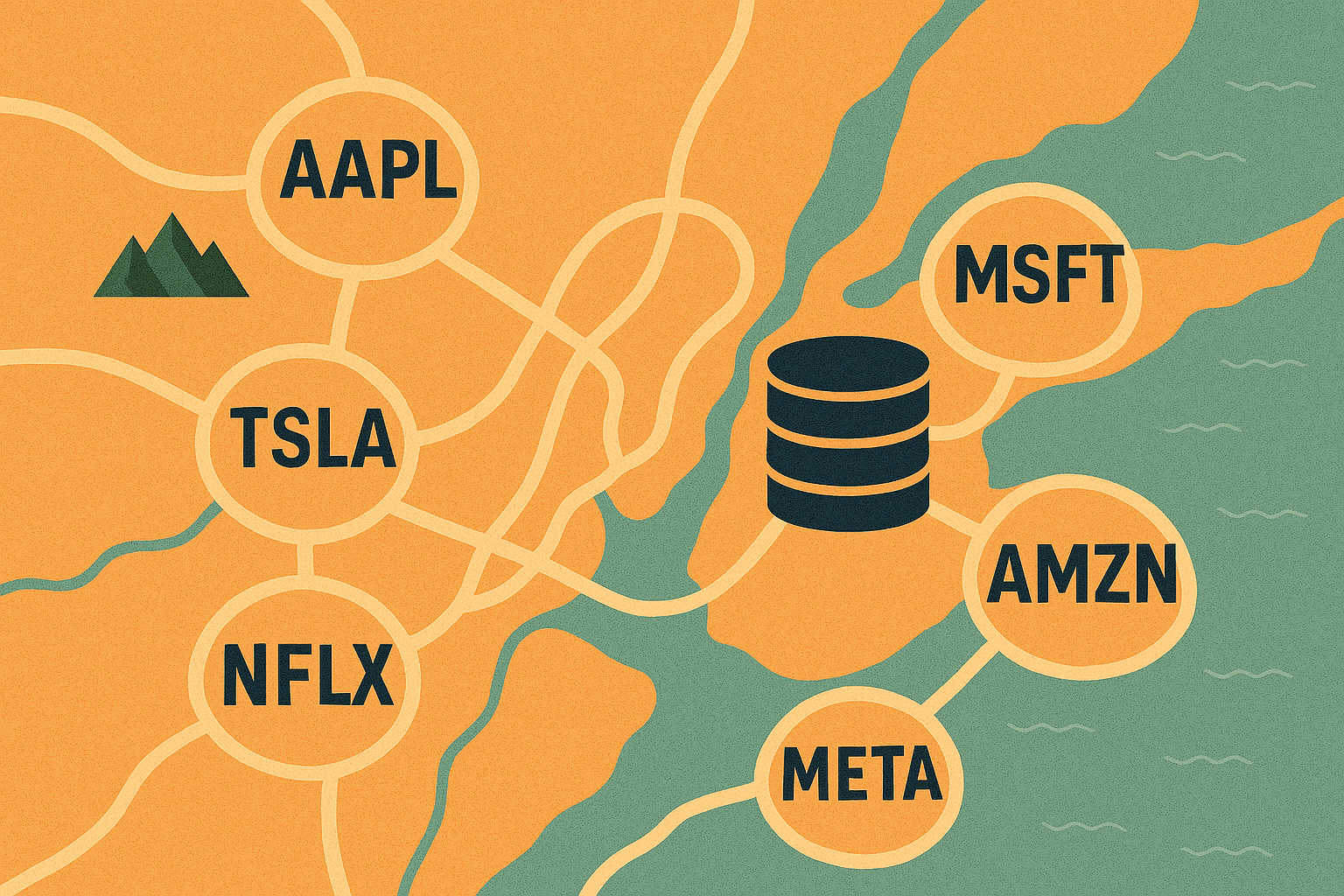The Unbound Alternative Data Conference was part of the inaugural Data Week, hosted by Eagle Alpha, a series of specialist meet-ups with industry experts across NYC. The conference was held on October 9th at Convene’s Madison Avenue offices. The agenda included talks from experts in the fields of AI and data strategy, new-to-market vendors showcasing innovative datasets and fresh features, Q3 trends from category leading vendors, B2B technology, and compliance updates. The summary of selected discussions is presented below.
How GPT4 and AI are Changing the Buyside

In this panel, hosted by Brian, the conversation centered around the evolving landscape of artificial intelligence (AI) and large language models (LLMs), with Sudip sharing his expert insights into current trends and academic research. Brian opened the discussion by asking Sudip for his perspective on the successes and challenges AI and GPT have faced over the past two years.
Sudip offered a nuanced analysis of the key LLMs shaping the field, such as LLaMA, Mistral, and GPT, noting how these models have progressed and begun to converge in their capabilities. He highlighted both the breakthroughs and the limitations that have emerged, including a discussion on AI hallucinations—where models generate incorrect or misleading information—and how this continues to be a pressing issue for developers. Sudip also discussed the idea that LLMs can learn themselves and evolve to collude.
Sudip then quickly highlighted four areas that the buyside can us LLMs for stock price predictions, extracting risks from corporate releases and transcripts, performing basic analytical work and lastly analysis and sentiment around FED texts to “decode the FOMC”.
Brian then switched the conversation to another important aspect for the buyside: security and privacy. As buyside firms increasingly rely on AI for research, the potential for data leakage, especially regarding proprietary research processes and internal data repositories, becomes a major concern. Sudip agreed, emphasizing the need for stringent security protocols to safeguard sensitive information.
Both speakers advised that when incorporating AI into buy-side operations, firms should aim for “small wins” rather than undertaking large, high-stakes projects from the outset. Focusing on domain-specific, targeted initiatives allows for better control, quicker results, and the ability to iterate and improve based on tangible outcomes. This pragmatic approach ensures that AI integration delivers meaningful results without overextending resources or facing significant risks.
The session concluded with Brian discussing his new venture, Parcosm.AI, which aims to leverage LLM technology to build a sophisticated entity recognition engine and graph model. This tool is designed to improve the efficiency of analyzing vast datasets by creating connections between entities, such as companies, people, and transactions.
Forward Looking Insights with Leading Data Vendors

Thomas Mason, Senior Quantitative Research Analyst at S&P Global Market Intelligence, discussed his research into the commercial real estate market (CRE) as 60% of records are missing a maturity date. By applying data science techniques, he is able to estimate these missing maturity dates and analyze the potential impact of this “wall of maturity” of over 1 trillion USD per year over the next four years. The current spread of maturing bonds to bond origination is approximately 200bps and this could lead to further problems down the line.
Forward looking insights from WeatherTrends360 delivered by CEO Bill Kirk suggest that 2025 will be much colder than normal as weather patterns are “out of sync” for various reasons. This shift in weather is expected to have broad implications for both retail and commodities markets. The warmer-than-usual weather in 2023 had already impacted trends in retail, with Flywheel’s data indicating notable effects on stock-keeping unit (SKU) trends, inventories, and discounting practices across the retail sector. However, as colder weather sets in, the trends from 2023 are expected to reverse going into year-end and continuing into 2025.
Retailers that typically perform well during colder periods are likely to benefit from these upcoming conditions. Jeremy Scott, Director of Product & Research at Flywheel, also highlighted an emerging trend: mid-to-upper-tier and specialty retailers are adjusting their SKU strategies to prevent inventory buildup, a move that could positively affect gross margins in the coming months. This proactive approach to inventory management signals a strategic shift in response to the expected weather-related changes in consumer demand.
B2B Software and Technology Panel

All three speakers opened with an overview of their data offering and the USPs their datasets offer to investors. Mathijs Baas, Sales Executive at Dataprovider.com, pointed out the firm’s ability to do a deep dive into SaaS and technology companies at the ticker level. However, he stressed that understanding the nuances of the data is essential to filter out false signals, which can otherwise mislead decision-making. In a follow-up, Mathijs mentioned a new recursive DNS data gathering technique, which has enabled Dataprovider to offer datasets that can be leveraged in a more quantitative and precise manner for deeper analysis.
RepVue has data across over 100 SaaS and other tech stocks where insights on the sales organization can be very valuable to investors with a mid to long term horizon and long/short equity use cases. Ryan Walsh, Founder and CEO of RepVue, pointed out that the data they collect and release to the investing community undergoes a rigorous compliance process. They undertook this compliance rigor from the outset and this approach has been validated by the growth in new clients over the past 12 months.
Thomas Masciale, Account Executive at JetNet, noted that they have four key datasets in their portfolio of data assets that allow them to have the most extensive read on the corporate jet market. He also pointed out that they have extensive data on fractional share ownership of corporate jets, allowing insight to more mid-level organizations and not just very large companies. Thomas pointed out that the value of their data extends beyond just M&A insights. It also sheds light on broader corporate relationships, offering strategic insights that can be critical for understanding a company’s network and influence.
All three vendors highlighted some large tickers like SQ, CRM, DOCU, HUBS, AKAM and others. They highlighted how combining different data points across various sources can create a broader “mosaic” of information, enabling investors to form a more comprehensive and nuanced understanding of these companies.
Analyst Lunch: Q3 Data Trends from Category Leading Vendors

The analyst lunch session had presentations from five vendors with a deeper dive into their respective data offerings and the insights that could be gleaned from the data. It was intended to be more for fundamental analyst and PMs to understand how alternative data can help their research processes. This lunchtime presentation was hosted by Zina Papageorgiou from Eagle Alpha.
Brendan Neary, Associate Director at S&P Global Market Intelligence, took a deep dive into trade data looking at Imports/Exports at the bill of lading and HS codes. This kind of analysis can be done for any commodity and Brendan discussed the potential impact of new US regulations on medical gloves. Historical bill of lading data can show where medical gloves are currently manufactured and what this might mean for potential US manufactures going forward.
Tom Grant, VP of Research at Apptopia, gave an overview of the metrics and KPIs that can be extracted for companies exposed to app data. Apptopia has a quant feed but has started to provide ticker level insights for about 15 tickers and this will expand soon with coverage of ride hailing and food delivery stocks, including data from Reddit. Tom pointed out past statistical performance forecast errors and MAPE for all tickers and discussed how forecasts can change over the course of any given quarter. Tom did a deep dive on Match.com and how they have improved MTCH forecasts with new data sources and methodologies.
Priyanka Dubey-Tarzikhan, Director of Data Acquisitions & Sales at Fable Data, gave a rundown of the company’s new pan-European data offering and why that is important to understand European consumer trends. On what is a topical analysis, Priyanka did a deep dive on European trends for Nike (NKE). Using a weighted average technique where Fable weights certain countries greater than others, the DTC trends for NKE were shown to be highly correlated with NKE reported results. Spending ASPs are in decline across the region. Priyanka pointed out that the UK and France are particularly important for NKE in Europe. She also highlighted weaker trends in Europe for McDonalds and showed how TEMU is gaining share against Amazon. Lastly, she presented some interesting analysis of Spotify that showed little to no churn or downgrading of monthly subscription plans despite recent price increases across the European region.
While corporate events and the corporate calendar is very important for quants, Anju Marempudi, CEO of EventVestor, pointed out that this data is also very important for fundamental analysts and event-driven funds. Keeping an eye on all events and any changes over time to events is a difficult problem that EventVestor solves for. Anju gave an example of an M&A event and what that process might involve. For example, the merger of Tapestry and Capri was a drawn-out affair with lawsuits, FTC intervention, new releases etc. Any or all of these events could move a stock price and impact deal spreads. In a look back scenario for backtesting all of these events, in a point in time nature, are required to test the ground truth of the stock price movement.
Ed Lavery, VP of Investor Intelligence at Placer.ai, gave an overview of the company’s geolocation data and use cases from real estate to retail and QSR coverage. A deeper dive into retail revealed what Ed called a “K shaped recovery” since COVID. Foot traffic looks positive at the top end of the market and also at the bottom (discounters) but the middle market is getting squeezed. Looking into some demographics, Ed noted that Aldi had seen a gradual increase in the average income of consumers as they had to shift to less expensive options. Trader Joe’s, on the other hand, saw a fairly steady increase in higher-income consumers. At the upper end of the department stores there is also a bifurcation with Nordstrom and Bloomingdales doing well while Saks and Kohl’s have been weak. Placer data is also pointing to similar bifurcation across the restaurant and QSR segments.
AI Compliance Implications for Vendors and Buyers

The panel on highlighted key risks and best practices related to generative AI and third-party data usage. The speakers addressed the potential for data leakage, where sensitive information could be inadvertently disclosed by AI models, emphasizing the importance of data anonymization. Regulatory risks were also discussed, including data privacy laws (GDPR, CCPA), fairness and bias in AI, and transparency requirements in decision-making processes. They also stressed the need to ensure compliance with financial regulations, prevent misuse of material non-public information (MNPI), and manage operational risks.
Another key issue discussed was the inherent risk of bias in AI models. Without proper safeguards, AI systems can unintentionally perpetuate biases, leading to discriminatory practices that not only raise ethical concerns but also invite regulatory scrutiny. The speakers emphasized that firms need to be aware of these risks and implement measures to ensure fairness and transparency.
Regulators may require that AI decision-making processes be explainable, which can be challenging with complex AI models, particularly in industries like finance, where AI is increasingly used for high-stakes decision-making. To comply with such requirements, firms must prioritize transparency in AI model development and ensure they have clear documentation explaining how these systems make decisions.
The panel also discussed the need for strong contractual agreements with AI providers to address key compliance challenges, particularly around data ownership, and confidentiality. Firms are advised to conduct thorough due diligence when sourcing third-party data, ensuring that data privacy regulations are adhered to and that the data quality is sufficient for decision-making processes. Provisions such as audit rights, breach notification clauses, and indemnification were suggested to ensure that AI providers manage data responsibly and comply with all relevant regulations. Additionally, as the regulatory landscape surrounding AI continues to evolve, firms were advised to stay proactive, engaging with legal experts to keep up with new guidance and adjusting their compliance frameworks accordingly.





